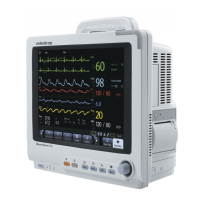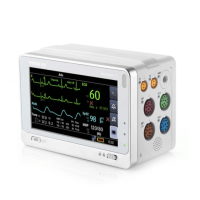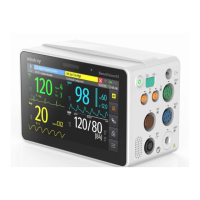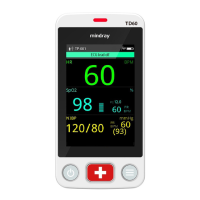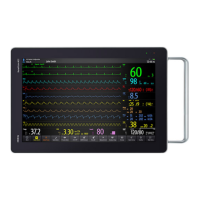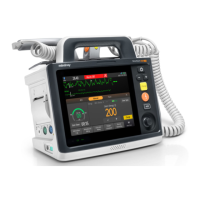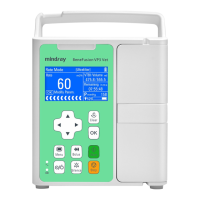15-1
15 Monitoring Carbon Dioxide
15.1 Introduction
CO
2
monitoring is a continuous, non-invasive technique for determining the concentration of CO
2
in the patient’ airway
by measuring the absorption of infrared (IR) light of specific wavelengths. The CO
2
has its own absorption characteristic
and the amount of light passing the gas probe depends on the concentration of the measured CO
2.
When a specific band
of IR light is passed through respiratory gas samples, some of IR light will be absorbed by the CO
2
molecules. The
amount of IR light transmitted after it has been passed through the respiratory gas sample is measured with a
photodetector. From the amount of IR light measured, the concentration of CO
2
is calculated.
There are two methods for measuring CO
2
in the patient’s airway:
Mainstream measurement uses a CO
2
sensor attached to an airway adapter directly inserted into the patient’s
breathing system.
Sidestream/Microstream measurement samples expired patient gas at a constant sample flow from the patient’s
airway and analyzes it with a CO
2
sensor built into the CO
2
module.
The mainstream CO
2
measurement can be used, with specified accessories, with intubated adult, pediatric and neonatal
patients. The sidestream and microstream CO
2
measurement can be used, with specified accessories, with intubated and
non-intubated adult, pediatric, and neonatal patients. With intubated patients, a sample of the respiratory gas is drawn
from the patient's breathing circuit through an airway adapter and a gas sampling line. With non-intubated patients, the
gas sample is drawn through a nasal cannula.
The measurement provides:
1. A CO
2
waveform
2. End tidal CO
2
value (EtCO
2
): the CO
2
value measured at the end of the expiration phase.
3. Fraction of inspired CO
2
(FiCO
2
): the smallest CO
2
value measured during inspiration.
4. Airway respiration rate (awRR): the number of breaths per minute, calculated from the CO
2
waveform.
